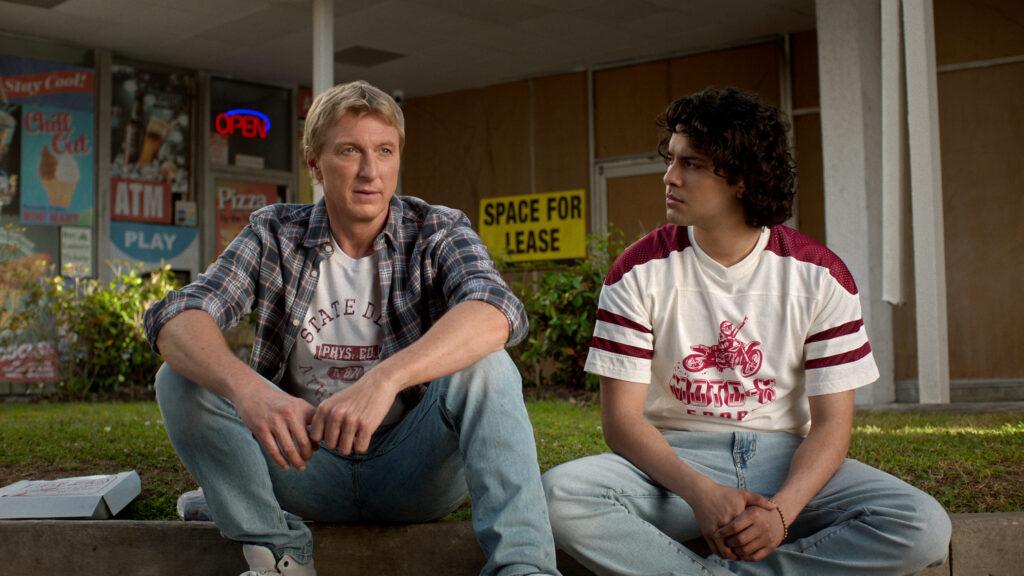‘Cobra Kai’ – Back in the Valley for One Last Round
‘Cobra Kai’ – Back in the Valley for One Last Round
https://blacknerdproblems.com/cobra-kai-finale-review/
In the seven years that it has taken for Cobra Kai to reach the end of its multi-chapter martial arts high school drama, a lot has changed in my life. My love for the series has not wavered though. From its relatively humble beginnings on YouTubeRed, a platform that no longer exists (a fact that I am aware that I bring it up quite frequently, but I will bring it up to emphasize that I have been here since Ace Degenerate aired on May 2, 2018), to its current explosive run on Netflix that catapulted it into the mainstream (or at least to my group of friends who could now more readily watch it on more household platforms), I have covered this series every season without fail. That has also included reviewing Season 6, Part 1 and Season 6, Part 2.
This will be my final piece covering Cobra Kai. I do not think it will be the last time I cover The Karate Kid franchise, but for now, we gotta do some bookkeeping about the events in Part 2 before we get to the main event and thoughts on the series as a whole.
If you’re not caught up on the first ten episodes of season six, this is your cue to turn back. Spoilers are coming.
Okay?
Okay?
Okay.

So a kid died at the Sekai Taikai.
The marquis brawl of Season 6 started with Kwon taking a cheap shot at Robbie during his semi-final bout with Axel, the undefeated and unhit ace of the Iron Dragon. It ended with Kwon picking up Kreese’s eunjangdo off the ground and attacking Axel only for Axel to counter in such a way that Kwon fell on the knife, and it flat out pierced his heart.
In a series where we have endured repeated attacks on existing injuries: an accidental kick that caused Miguel to fall two stories and left him in critical condition as the season 2 cliffhanger, a literal home invasion at the end of season 3, brainwashing, fight fixing, witness tampering, and a prolonged war flashback, it is not like we are unfamiliar with the brutality of unchecked violence. But Kwon’s death inevitably changes the calculus of the universe.
It was perhaps the inevitable conclusion of the mini-arc that was Part 2, given how Danny boy had started to learn about the unsavory parts of Miyagi’s past. This culminated in a flashback where they digitally resurrected Miyagi for a scene, something I have exceedingly mixed feelings about. Yes, they got permission from the family; however, the series had manage to respect the character’s legacy via exceedingly well-used clips from the original movies. Also, Brian Takahashi, the actor that played Young Miyagi, was doing an incredible job within the scene to the point where I don’t think we needed Danny to be haunted by the visage of his father figure.
Although, the events and revelations at Barcelona did set the stage for the final act of Cobra Kai. Unfinished business, guilt, worry, trepidation, and the want for answers and redemption.
The final five episodes of the series take us back to the Valley, and everyone is going through it for different reasons. The death of a peer, however much of a… firestarter Kwon was, has shaken the now high school seniors who were also counting on the tournament as a way of moving past their own hang ups. And the adults aren’t taking it well either with Danny easily out of character and unsure what to do with knowledge and Johnny lamenting for the lack of opportunity to prove that all of his character growth meant something.
However, this is martial arts high school drama, so it takes all of ten minutes for Terry Silver to induce machinations to try and finish the tournament. Thomas Ian Griffith continues to play the megalomaniac villain perfectly. Also, Kreese, continuing on his weird pseudo redemption arc, mourns the loss of his star student and manages to make it back Stateside with absolutely no problem despite being a literal prison escapee, one of many logistical oddities that plague the series’ final run.
By the end of episode 1 (or 11 depending on how you’re counting), the Sekai Taikai is in fact back on, and it’s happening in the Valley, courtesy of… plot predominantly. It certainly helps that two (one and a half?) of the three participating dojos are based there, but it’s mostly for the narrative book end.
What follows is sort of an accelerated version of a season. We get a training montage, we get the rest of the tournament, and we get the aftermath. Due to this acceleration, the focus of the show pretty much centers solely back on the core ensemble. A lot of the supporting cast is relegated to cameos, references, and one-off jokes, as the bulk of the runtime has to be dedicated to the characters that have been active participants throughout the series. This is ultimately fine, given that the ensemble had grown to a massive size, and the reduced scope in Season 6, Part 2 helped with pacing so an even more reduced scope in Part 3 is only sensible.

The show continues to impress me with how it handles teen topics, as it has one of the more realistic and practical depictions of kids dealing with the reality of post-high school lives and adults dealing with their hang ups and reservations. This particular stretch didn’t quite impress me with the martial arts tournament, something that is almost expected as Season 6, Part 2 made it very clear that the Sekai Taikai’s rules and regulations were full of loopholes that allowed for rampant roster and allegiance changes at pretty much a drop of a dime. The fights themselves continued to be fantastic, although they didn’t quite reach the same levels of hype as some of the early fight scenes.
My personal top 3 are:
- Chozen demonstrating Miyagi’s Pressure Points (Season 3, Episode 5)
- Robbie’s handstand kick (Season 1, Episode 10)
- Daniel LaRusso vs. Terry Silver (Season 5, Episode 10)
You know. I will sneak in my number four. The Season 6’s tag team fight. That was admittedly glorious.
Still, the fight choreography remains impressive, and it remains a lot of fun to watch. The music team put in the work, and it shows. Whether it is a clever pairing of an 80’s rock song or a crisp orchestral score, it’s a constant stream of good tunes.
And the acting remains fantastic. The entire cast that gets proper screentime shows off how much they have learned to embody their characters, none more so than William Zabka bringing his iconic character’s arc to its end. Ralph Macchio and Courtney Henggeler play beautifully off each other. Yuji Okumoto continues to be the best part of the continuation. And I am so ecstatic to see where Xolo Maridueña, Tanner Buchanan, Mary Mouser, Peyton List, and Jacob Bertrand go next (which given Xolo Maridueña’s Blue Bettle and Peyton List’s School Spirits, I think the answer is to say, great places).
What drags Part 3 down is the complete loss of sense of scale and time. Without getting into too much detail, the pacing of the final tournament sequence feels drawn out and yet somehow, there are still missed moments and opportunities. To say more would require me to spoil things, and we can’t have that. That said, the end of the series I feel does mostly stick the landing, but whether or not you agree is going to be up to you.
Cobra Kai has been a series about balance and legacy. It has been a story about unlearning and learning. It has been one of my favorite shows despite its many flaws because the series manages to tell an epic story that manages to continue the tale of one of my favorite film franchises in a way that brings the story to a whole new generation. It has introduced me to several great talents who I am excited to see post-Cobra Kai. It is a brilliant sports drama and an interesting attempt to analyze the stark values dissonance of the 80s and 2010’s/2020’s with mixed results. It mostly succeeds.

I feel satisfied. Not elated, not defeated, just satisfied. Which is perhaps not the way I wanted the run to end, but Heald, Hurwitz, and Schlossberg had a story they wanted to tell and they told it well.
We’ll see what the future holds for the extended Karate Kid Universe (specifically in July), but for one last time, say it with me.
COBRA KAI NEVER DIES.
All episodes of Cobra Kai are now available on Netflix.
Want to get Black Nerd Problems updates sent directly to you? Sign up here! Follow us on BlueSky, Twitter, Facebook, YouTube, Twitch, and Instagram!
The post ‘Cobra Kai’ – Back in the Valley for One Last Round appeared first on Black Nerd Problems.
